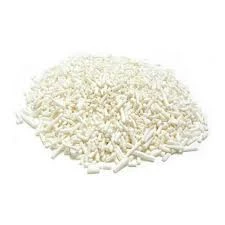
Trends in Potash Fertilizer Prices and Market Influences
Understanding Potash Fertilizer Prices Trends and Factors Influencing the Market
Potash fertilizer, a crucial nutrient for plant growth, plays an essential role in global agriculture. Its primary components, potassium chloride (KCl), potassium sulfate (K2SO4), and other potassium-based compounds, are vital for enhancing crop yield and quality. However, fluctuations in potash fertilizer prices can significantly impact both farmers and consumers, making it essential to understand the factors influencing these price dynamics.
Recent Trends in Potash Prices
In recent years, potash fertilizer prices have experienced considerable volatility. After a steady increase in the early 2020s, prices peaked largely due to a combination of global supply chain disruptions, increased demand following pandemic-related agricultural rebounds, and geopolitical tensions affecting major exporting countries. For instance, the conflict between Russia and Ukraine in 2022 played a pivotal role in disrupting the supply of various fertilizers, including potash. As a result, countries heavily dependent on imports saw skyrocketing prices, prompting governments to seek alternative sources and strategies to stabilize their agricultural sectors.
As of late 2023, while prices have somewhat stabilized compared to their peak values, they remain elevated in historical terms. Farmers are adjusting their budgets and crop rotations based on these new economic realities, highlighting the broader repercussions of potash prices on the agriculture industry.
Key Factors Influencing Potash Prices
1. Global Supply and Demand Dynamics The fundamental principles of supply and demand are paramount in determining potash prices. A surge in global food demand, driven by population growth and changing diets in developing nations, has intensified the need for fertilizers, including potash. Concurrently, the availability of raw materials and production levels can fluctuate, impacting supply. Countries like Canada, Belarus, and Russia are leading producers, and any disruption in these regions can cause significant price swings.
2. Geopolitical Tensions and Trade Policies Geopolitical factors are increasingly influencing potash prices. Trade sanctions, tariffs, and export bans can limit the availability of potash. For example, sanctions against Russia have led to a reassessment of trade routes and partnerships, causing some countries to look for alternative suppliers, thus creating a ripple effect on prices. Additionally, domestic policies related to agriculture and environmental regulations can either incentivize or disincentivize potash production.
potash fertilizer price

3. Cost of Production The cost to produce potash is another critical factor. This includes the expenses associated with mining, transportation, and processing. Rising energy prices and labor costs can affect overall production costs. Fertilizer producers are often compelled to increase prices to maintain profit margins, especially when faced with soaring operational costs.
4. Environmental Concerns and Sustainability As agriculture increasingly shifts towards sustainable practices, the demand for more eco-friendly fertilizers has risen. This shift can influence potash prices, especially if producers need to invest in technology and practices that comply with environmental regulations. Additionally, the emphasis on sustainable agriculture prompts farmers to be more strategic in their fertilizer use, impacting overall demand patterns.
5. Technological Advancements Innovations in agricultural technology can also affect potash prices. Enhanced nutrient management practices, precision agriculture, and the development of slow-release fertilizers can reduce the overall quantity of potash needed for effective crop production. As these technologies become more widespread, they may moderate demand and influence price levels in the long term.
Looking Ahead What Does the Future Hold for Potash Prices?
The outlook for potash fertilizer prices in the coming years remains uncertain. Analysts suggest that while some stabilization is expected as supply chains adjust, the long-term trend will largely depend on geopolitical stability, agricultural demand, and the pace of technological advancements. Furthermore, the push for increased sustainability in farming practices could reshape the fertilizer market, with an increasing focus on more integrated nutrient management approaches.
Farmers, policymakers, and industry stakeholders must stay informed about these trends and adapt their strategies accordingly. It is crucial to balance economic viability with sustainable practices to ensure that the agricultural sector can continue to meet global food demands without compromising environmental integrity.
In conclusion, the price of potash fertilizer is not merely an economic issue; it reflects a complex interplay of environmental, technological, and geopolitical factors. Understanding these dynamics can help stakeholders navigate the challenges and opportunities that lie ahead in the ever-evolving agricultural landscape.
-
Why Glacial Acetic Acid Food Grade Is Essential in FlavorNewsMay.26,2025
-
Surging Export Growth of Food Additives in ChinaNewsMay.26,2025
-
How Ammonium Nitrate Fertilizer Boosts Crop YieldsNewsMay.26,2025
-
How 1,2,3-Benzotriazole Shields Plastics from UV DegradationNewsMay.26,2025
-
Cyanide in Gold Mining: Protecting People and the PlanetNewsMay.26,2025
-
Aluminum Hydroxide in Modern Sunscreen FormulationsNewsMay.26,2025
-
Understanding Synthetic Rubber OptionsNewsApr.27,2025
Hebei Tenger Chemical Technology Co., Ltd. focuses on the chemical industry and is committed to the export service of chemical raw materials.
-

view more DiethanolisopropanolamineIn the ever-growing field of chemical solutions, diethanolisopropanolamine (DEIPA) stands out as a versatile and important compound. Due to its unique chemical structure and properties, DEIPA is of interest to various industries including construction, personal care, and agriculture. -

view more TriisopropanolamineTriisopropanolamine (TIPA) alkanol amine substance, is a kind of alcohol amine compound with amino and alcohol hydroxyl, and because of its molecules contains both amino and hydroxyl. -

view more Tetramethyl Thiuram DisulfideTetramethyl thiuram disulfide, also known as TMTD, is a white to light-yellow powder with a distinct sulfur-like odor. It is soluble in organic solvents such as benzene, acetone, and ethyl acetate, making it highly versatile for use in different formulations. TMTD is known for its excellent vulcanization acceleration properties, which makes it a key ingredient in the production of rubber products. Additionally, it acts as an effective fungicide and bactericide, making it valuable in agricultural applications. Its high purity and stability ensure consistent performance, making it a preferred choice for manufacturers across various industries.











